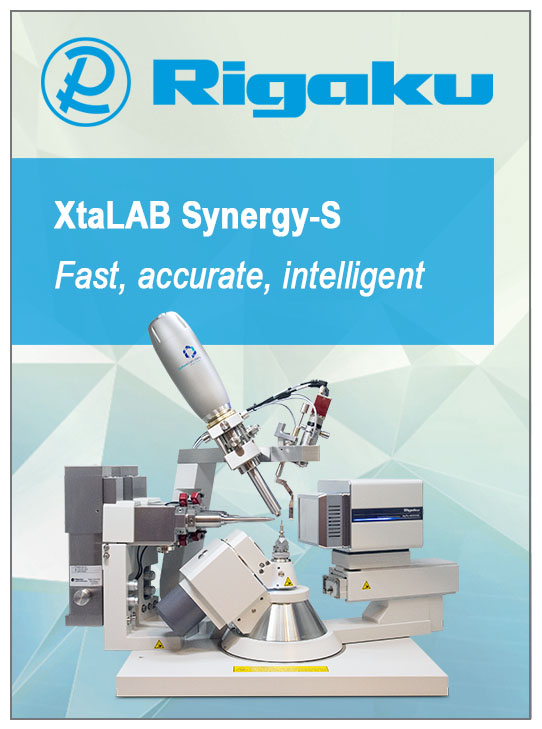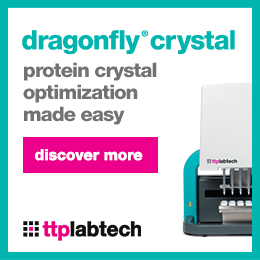
Research news
How photosynthesis gets turned off when the lights go out
![PRK [PRK]](https://www.iucr.org/__data/assets/image/0004/143482/PRK.png)
In photosynthetic organisms, carbon fixation must be coordinated with the light harvesting reactions to prevent unnecessary energy expenditure in the absence of light. The enzyme phosphoribulokinase (PRK) produces the substrate for the carbon fixation step and switches off reversibly by disulfide bond formation. How this works in β-cyanobacteria is reported in a recent article in Acta Cryst. F by Wilson et al. (2019) and the Proteopedia molecular tour accompanying the article.
The paper describes the dimeric structure of PRK from the cyanobacterium Synechococcus PCC6301. This enzyme catalyzes the transfer of a second phosphate group onto ribulose 5-phosphate, thus creating the ribulose-1,5-bisphosphate (RuBP) substrate for ribulose 1,5-bisphosphate carboxylase/oxygenase (RuBisCO). The need for RuBP is found in virtually all autotrophic organisms, and there are corresponding PRKs in all kingdoms. Phylogenetic analyses of PRKs show two broad classes of enzymes, prokaryotic homo-octameric systems and thiol-regulated dimeric enzymes.
Dimeric PRKs are found in cyanobacteria, green algae and higher plants, and in these organisms the formation of a disulfide bridge across the active site effectively closes down the enzyme. The blocking disulfide is controlled by the local redox environment, which in turn is coupled to the ambient light levels. The formation of a cysteine disulfide bond in the absence of light blocks substrate binding. PRKs from green algae and plants contain a conserved insertion, which might add an additional layer of regulation in eukaryotes. In dimeric archaeal PRKs, this redox mechanism is not possible, due to the absence of the necessary cysteine residues. Of note, β-cyanobacteria, algae and plants additionally shut down a second enzyme of the carbon fixation pathway, GAPDH, via complex formation with PRK and the adaptor protein CP12. CP12 also shows redox regulation, transitioning from an intrinsically disordered form into a structured oxidized form in the absence of light, which facilitates CP12’s interaction with PRK and GAPDH. Structure determination of this inactive complex is pursued by the Murray Lab at Imperial College, London, UK.
Results of a parallel study are reported in a recent paper by Gurrieri et al. (2019), which presents the structures of a plant chloroplast PRK and algal PRK. These show the same pattern of cysteine arrangement poised for controlling the activity of the enzyme, but coupled with a longer ‘clamp loop’, postulated to bring the regulatory thiol side chains into proximity as needed.
Enzymes from simpler hosts are not necessarily simpler to work with: the prokaryotic enzyme crystallized and diffracted well, but in a system where molecular replacement was insufficient, it required the addition of data from an osmium derivative to unambiguously describe the second PKR monomer (Wilson et al., 2019). The very same molecular replacement model (PDB entry 5b3f; Kono et al., 2016) was sufficient to solve the plant system (Gurrieri et al., 2019).
References
Gurrieri, L., Del Giudice, A., Demitri, N., Falini, G., Pavel, N. V., Zaffagnini, M., Polentarutti, M., Crozet, P., Marchand, C. H., Henri, J., Trost, P., Lemaire, S. D., Sparla, F. & Fermani, S. (2019). Arabidopsis and Chlamydomonas phosphoribulokinase crystal structures complete the redox structural proteome of the Calvin–Benson cycle. Proc. Natl Acad Sci. USA, 116, 8048–8053.
Kono, T., Mehrotra, S., Endo, C., Kizu, N., Matusda, M., Kimura, H., Mizohata, E., Inoue, T., Hasunuma, T., Yokota, A., Matsumura, H. & Ashida, H. (2017). A RuBisCO-mediated carbon metabolic pathway in methanogenic archaea. Nat. Commun. 8, 14007.
Copyright © - All Rights Reserved - International Union of Crystallography









